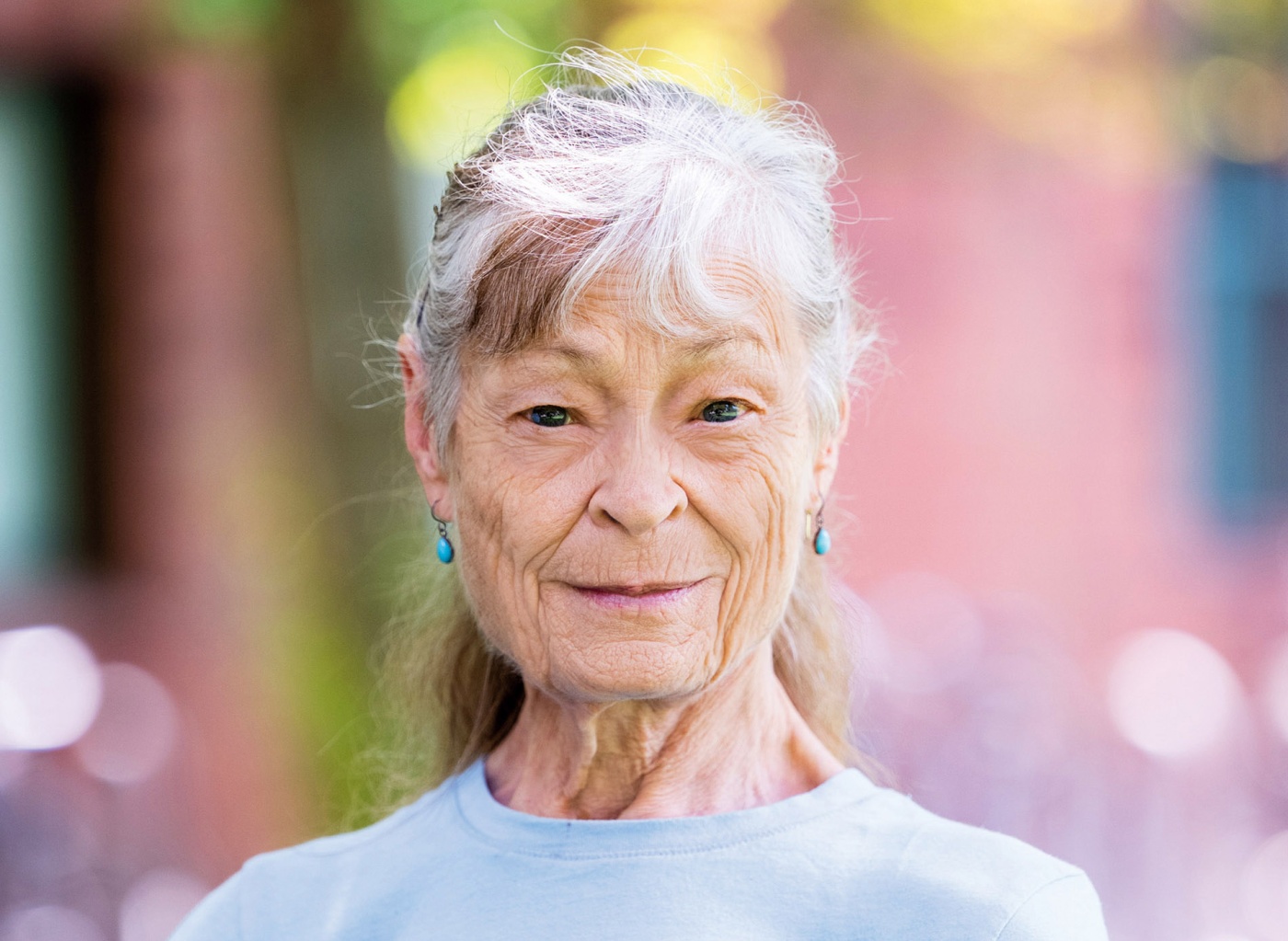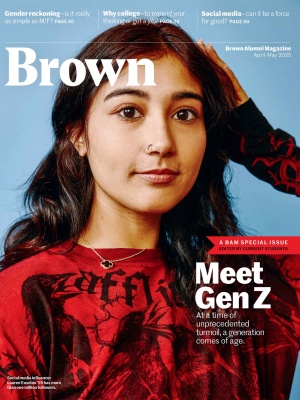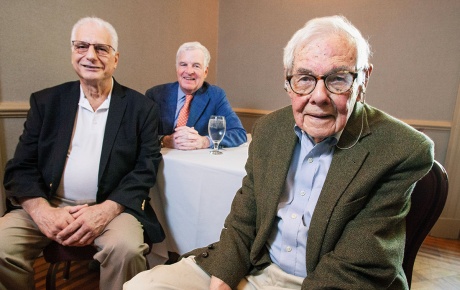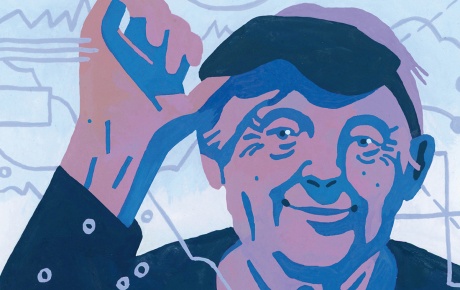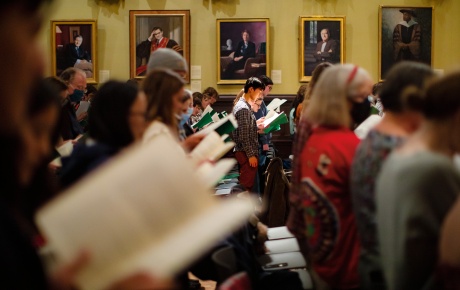Most people trawl the legendary Cliff Walk in Newport, Rhode Island, for stunning views of the ocean and the coastline’s Gilded Age mansions. But for decades, Brown department of earth, environmental and planetary sciences (DEEPS) professor Jan Tullis, a geologist who in 1971 became the first woman on the department’s faculty, would take her introductory Geo 22 class there for a different reason: to look at the various formations and minerals in the cliffs to suss out, forensics style, what had happened millennia ago to make them that way.
For example, the southern end of the walk features cliffs that were actually once part of a microcontinent called Avalonia, says fellow DEEPS professor Karen Fischer, who cotaught Geo 22 with Tullis for 24 years. “Jan would ask the students, ‘Can you put together the complete sequence of events that affected all these rocks?’” says Fischer.
If anyone could take the cold, hard science of studying rocks and turn it into a decades-long opportunity to nurture students not just as future scientists but as compassionate, curious, and well-rounded human beings, it was Tullis, says Fischer: “She cared about helping students understand the course material at a deep level, but teaching to her was so much more. She was interested in ways to help students be, not only successful, but who they really wanted to be.”
Tullis died on September 15 in Providence at age 81 after a period of illness. She’d officially retired in 2013 but kept on teaching and advising undergraduates right up through last year. The extent to which she would help students figure out their professional and personal lives, even decades after they’d graduated, was extraordinary: When some former students got word last year that she was hospitalized, they organized a Google doc of good wishes and remembrances to be read to her on a daily basis. Four weeks after her death, the doc contained more than 200 notes, many quite long and detailed, most from former students who’ve gone into the sciences.
One is from Daniel Zhou ’23, now working for NASA: “I would have never been able to join a large planetary mission researching the topics that fascinate me without your kindness and support! I think of you always whenever I see a beautiful mineral specimen, whether it’s an intricately-etched fluorite in a museum display or a classic wine-red garnet dodecahedron.”
“In our free time, Jan and I would look through the department’s collection of mineral specimens,” says Zhou, “and garnets were our favorite.”
A New Jersey-born geology graduate of Carleton College who earned her PhD in the same field from UCLA, she arrived on campus essentially following her then-husband, Professor Terry Tullis, into what was then called the geology department, where she became a research assistant. Once she started teaching, her prodigious skill for bringing earth science to life—and for getting students to think and write critically about their findings—became evident. “Many of Jan’s intro students didn’t know anything about geology,” says DEEPS chair Professor Meredith Hastings, “but she made them excited to look at the world around them to the point that they ended up going into the field.”
Her specific area of focus was deformation, the process by which massive rock plates beneath the earth either smash or ooze together, forming mountain ranges. It’s not an area of research that necessarily has real-world application, such as preventing earthquakes, says DEEPS professor Greg Hirth, but it reveals fascinating secrets about how the earth came to be. “By monitoring how fast plates form, you can gauge where rock deformation is greatest,” he says. “Today, you can do this with GPS data, but Jan was doing accurate predictions from the naked eye, which is why her work is still well cited.”
With students, she could be blunt, but her pedagogy was democratic and interactive well before those became teaching trends; she affectionately referred to students as “partner,” as in, “Well, what do you think, partner?” And her love of the natural world was deeply sincere. Pamela Burnley ’81, now a geology professor at UNLV, says that once, shortly after a blizzard that left the campus weighed down with snow, she came across Tullis crying. “I asked her what was wrong, and she said she was devastated because all the trees were being killed by the ice.”
She loved the arts and encouraged students to pursue both scientific and artistic passions, attending their art shows and live performances. Ethan Wold ’20, a guitarist currently getting his PhD in biophysics at Georgia Tech, says during his last yearly lunch with Tullis in Providence, she gave him a mandolin that had belonged to her grandfather. “She was a pretty extraordinary person,” he says.
Tullis was also a role model and anchor for women entering a field long dominated by men. Burnley remembers experiencing “low-level sexual harassment” in the ’70s. In Tullis, “I had somebody who could confirm my own feeling that what I was experiencing was not acceptable.”
DEEPS is planning a celebration of Tullis’s life this spring. She is survived by her ex-husband Terry, with whom she remained friends; two sisters; two nieces; and countless students, among them Leo Penny ’20, who wrote in that Google doc: “I think about you whenever I see an inspiring outcrop and am always excited to inspire others just as you inspired me.”

